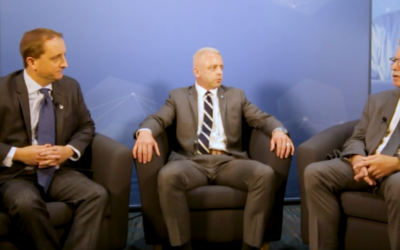The G0453 Code
ATTENTION: This Needs To Be Handled By 9/2/2014 (EDIT: Action time is over to kill the G0453, but still worth the read)
Neuromonitoring professionals have been waiting to see how Medicare’s new G code (G0453) is going to affect the way we deliver our services, as well as reimbursement for those services. Now that we are 18 months into it, many providers are finding it difficult to provide services that are in accordance with standard practice.
It is time for our voice to be heard. We are asking you to take the time to read through this material to understand what’s going on, what’s at stake and the best solution. So please read through this post, and make sure to follow the directions at the end to help make a change.
Here’s Where The Problem Started:
For many years, IONM services were paid under CPT code 95920 which allowed for providers to monitor multiple surgical cases simultaneously. In 2012, the American Medical Association’s (AMA’s) Current Procedural Terminology (CPT) Panel established two CPT codes for IONM services to replace code 95920: (1) CPT code 95940 for time spent by a provider in the operating room monitoring a single patient; and (2) CPT code 95941 for time spent by a provider monitoring one or more patients from outside of the operating room. Subsequently, the AMA’s Relative Value Unit (RVU) Update Committee (RUC) developed valuations for these codes. In the calendar year 2013 Medicare Physician Fee Schedule (MPFS) Final Rule (published November 16, 2012); CMS declined to adopt code 95941 for Medicare and instead created HCPCS code G0453, which provides for Medicare payment for IONM services provided from outside the operating room billed in 15 minute time increments for continuous monitoring with “attention directed exclusively to one patient”. It is our understanding that CMS felt that code 95941 would allow providers to bill Medicare for monitoring provided to more than one beneficiary during the same time interval and that this would be inconsistent with Medicare payment policy.
Unfortunately, the requirement that G0453 may only be billed for continuous time spent exclusively monitoring one patient is inconsistent with a standard of care that recognizes that more than one surgery can be monitored simultaneously. It is inconsistent with a standard of practice whereby multiple surgeries are monitored at the same time, with the on-duty monitoring professionals organizing and sharing their workload in a manner that ensures close attention at all appropriate times during the surgical procedures. The practical result of the decision to use code G0453 is that most providers cannot currently bill for IONM services provided to Medicare patients when delivered (as is commonly the case) remotely and simultaneously.
Here’s How Things Have Played Out Over The Past 18 months:
· G0453 has created situations whereby Medicare is frequently not being billed for IONM services being provided to Medicare beneficiaries
· G0453 has created situations whereby Medicare is billed for less than “allowable” IONM services being provided to Medicare beneficiaries
· Medicare intermediaries are misinterpreting CMS’ own definitions and guidance of G0453 further limiting access to care
· At the behest of Corporate and Institutional Compliance Officers, IONM providers are increasing documentation, limiting professional provider services and recruiting non-physician/professional providers to provide oversight to fulfill access to care concerns
· The reimbursement model created by G0453 is simply unsustainable, unfair to providers and inconsistent with CMS regulations for billing for professional services.
Here’re Our Concerns:
The G0453 provides reimbursement solely for continuous IONM, from outside the operating room (remote or nearby), per patient, (attention directed exclusively to one patient) each 15 minutes. The requirement that the provider bill Medicare in 15-minute increments for the time exclusively directed to one patient is inconsistent with how services are commonly delivered and highly problematic.
IONM and testing have been standard practice for almost 30 years. Utilization of remote neuromonitoring by the provider has greatly expanded the access to care for patients and provides neuroprotective care and risk management for surgeons and hospitals. Monitoring multiple patients where clinically appropriate is the standard of practice and increases the efficiency of service delivery, and most importantly, access to IONM services for all patients in need. The physician needs to have the ability to watch all patients in real time and for periods of time when the physician must have “eyes on” one patient without any scanning of other patients, whereby those patients must be handed off to another physician pursuant to an established protocol. Many coverage policies reinforce this requirement. Generally, the specialty societies in this field have indicated that they do not recommend a particular limit on the number of cases, as this is best left to clinical judgment. Obviously, with approximately 750,000 surgeries monitored by IONM every year, and only about 500 full- and part-time monitoring professionals, there is going to be a need for concurrent monitoring.
Here’s Our Position:
We think that CMS’ view that if more than one Medicare beneficiary is billed for monitoring performed during a 15-minute increment, then the same time has been “billed twice”, constitutes a fundamental misunderstanding of the service that is being rendered. In our view, both beneficiaries are receiving monitoring services concurrently and both are appropriately billed for services rendered concurrently. This was inherently recognized by the AMA CPT process in creating the original code 95941. This is how IONM is practiced, how services are rendered and, other than under G0453, how they are billed. Additionally, contemporary literature and the IONM practice guidelines published by medical Associations and professional Society’s demonstrate that concurrent monitoring is the accepted standard of practice.
Here’s Our Solution:
Right now, some providers are simply monitoring Medicare patients and not billing, but this is not sustainable — the economics of the investment of time and resources doesn’t justify it.
The problem we face at this juncture is that going back through the CPT and RUC processes with an alternative is likely to take years. Given that Medicare is largely not being billed under G0453, this is not a tenable near-term fix. We, therefore, think that what makes the most sense is for CMS to reinstate the use of code 95941. We note that code 95941 has a number of safeguards built in to clarify the conditions under which concurrent monitoring may occur, including:
- It is inapplicable to any form of automated monitoring device that does not require continuous attendance by a professional qualified to interpret the testing and monitoring.
- The monitoring professional must be solely dedicated to the monitoring and must be available to intervene at all times during the reported time period. No other clinical activities can be provided during the same period of time.
- There must be a provision for continuous and immediate communication with the surgical suite team.
- When monitoring more than one procedure, there must be the immediate ability to transfer patient monitoring to another professional should exclusive attention be required to another procedure.
- Time spent on the baseline study is not included under code 95941 and the baseline study is only reported once per operative session regardless of whether the procedure spans the midnight hour.
Therefore we would strongly encourage CMS, based on the inconsistencies of administration of several of the MACs, current standards of patient care received by approximately 125,000 Medicare beneficiaries and the universal recommendation of IONM providers to assure continuity of access to IONM care, to reinstate CPT code 95941, in replacement for the temporary code G0453.
Given the potential for serious service disruptions and adverse impacts on the quality of care, we believe that it is incumbent upon CMS to address the problems with code G0453 in the upcoming final rule. We encourage CMS to retire the temporary code G0453 and accept the AMA CPT code 95941 as the primary reimbursement code for neurophysiological monitoring during surgical procedures impacting the medical status and lives of Medicare beneficiaries.
Here’s What You Need To Do:
Let your voice be heard. We are ALL sending in our comments to Centers for Medicare & Medicaid Services. And this has to be done by 09-02-2014. So right now, do the following:
1) Go to www.regulations.gov to submit an electronic comment.
2) Enter “CMS-1612-P” (including the quotation marks) in the search area.
3) Select “Medicare Program: Revisions to Payment Policies under the Physician Fee Schedule”.
4) Select the “Comment Now” button on the right of the screen.
5) Follow the steps for ‘‘Submitting a Comment”
Remember, submitting a comment is not enough. Please enter a well thought out comment that gives a reason “why” they need to make this change (plenty of info above).
Here’s What You Need To Do After That:
We need to spread the word. Here’re some ideas on how to best go about it.
1) Send an email to this link to every person you know that is involved in neuromonitoring. This includes people in your company and those that work for other companies.
2) Comment or like this post so everyone on your social media profiles has the opportunity to read this and act on it.
3) Ask other healthcare professionals to join the cause. It looks great when surgeons, anesthesiologist, nurses, scrub techs, hospital administrators, etc. are advocating our services.
Thank you for taking the time to leave your comment with Marilyn Tavenner, Administrator for the Centers for Medicare & Medicaid Services, as well as getting the entire profession involved.
Keep Learning
Here are some related guides and posts that you might enjoy next.
How To Have Deep Dive Neuromonitoring Conversations That Pays Off…
How To Have A Neuromonitoring Discussion One of the reasons for starting this website was to make sure I was part of the neuromonitoring conversation. It was a decision I made early in my career... and I'm glad I did. Hearing the different perspectives and experiences...
Intraoperative EMG: Referential or Bipolar?
Recording Electrodes For EMG in the Operating Room: Referential or Bipolar? If your IONM manager walked into the OR in the middle of your case, took a look at your intraoperative EMG traces and started questioning your setup, could you defend yourself? I try to do...
BAER During MVD Surgery: A New Protocol?
BAER (Brainstem Auditory Evoked Potentials) During Microvascular Decompression Surgery You might remember when I was complaining about using ABR in the operating room and how to adjust the click polarity to help obtain a more reliable BAER. But my first gripe, having...
Bye-Bye Neuromonitoring Forum
Goodbye To The Neuromonitoring Forum One area of the website that I thought had the most potential to be an asset for the IONM community was the neuromonitoring forum. But it has been several months now and it is still a complete ghost town. I'm honestly not too...
EMG Nerve Monitoring During Minimally Invasive Fusion of the Sacroiliac Joint
Minimally Invasive Fusion of the Sacroiliac Joint Using EMG Nerve Monitoring EMG nerve monitoring in lumbar surgery makes up a large percentage of cases monitored every year. Using EMG nerve monitoring during SI joint fusions seems to be less utilized, even though the...
Physical Exam Scope Of Practice For The Surgical Neurophysiologist
SNP's Performing A Physical Exam: Who Should Do It And Who Shouldn't... Before any case is monitored, all pertinent patient history, signs, symptoms, physical exam findings and diagnostics should be gathered, documented and relayed to any oversight physician that may...








Joe, I value the post, complete with a background of why the comments are needed for submission to CMS. What I would like to know when the headers are referenced as “Here’s our concern, and Here’s our solution” if you are authoring this to rally the troops, or if this is a position statement by ASNM? When the term “our” is used, to whom us this referencing?
ASET, The Neurodiagnostic Society likewise has put out a similar BOLO to its members to solicit comments. ASET plans to submit a letter to CMS with references from members about the coding concern.
I would reiterate that the content links and steps needed for a professional are delineated in your welcome post. Thank you for the synopsis and availing social media to spread the word.
To this end, is there a list that you know of of professional associations that are enlisting support, such as ASNM, ASET, AAN, ANA, UNPA etc.? Any links that members of various organizations to review comments prior to individually send letters to CMS?
Kristina Port
Kristina Port
Hi Kristina. The “we” is a group effort from the good old people of SpecialtyCare. I created the post out of information that was spread throughout our company so that others can join in the efforts.
I am glad to hear others have made efforts for this as well, but I don’t have any information on who is contributing what.